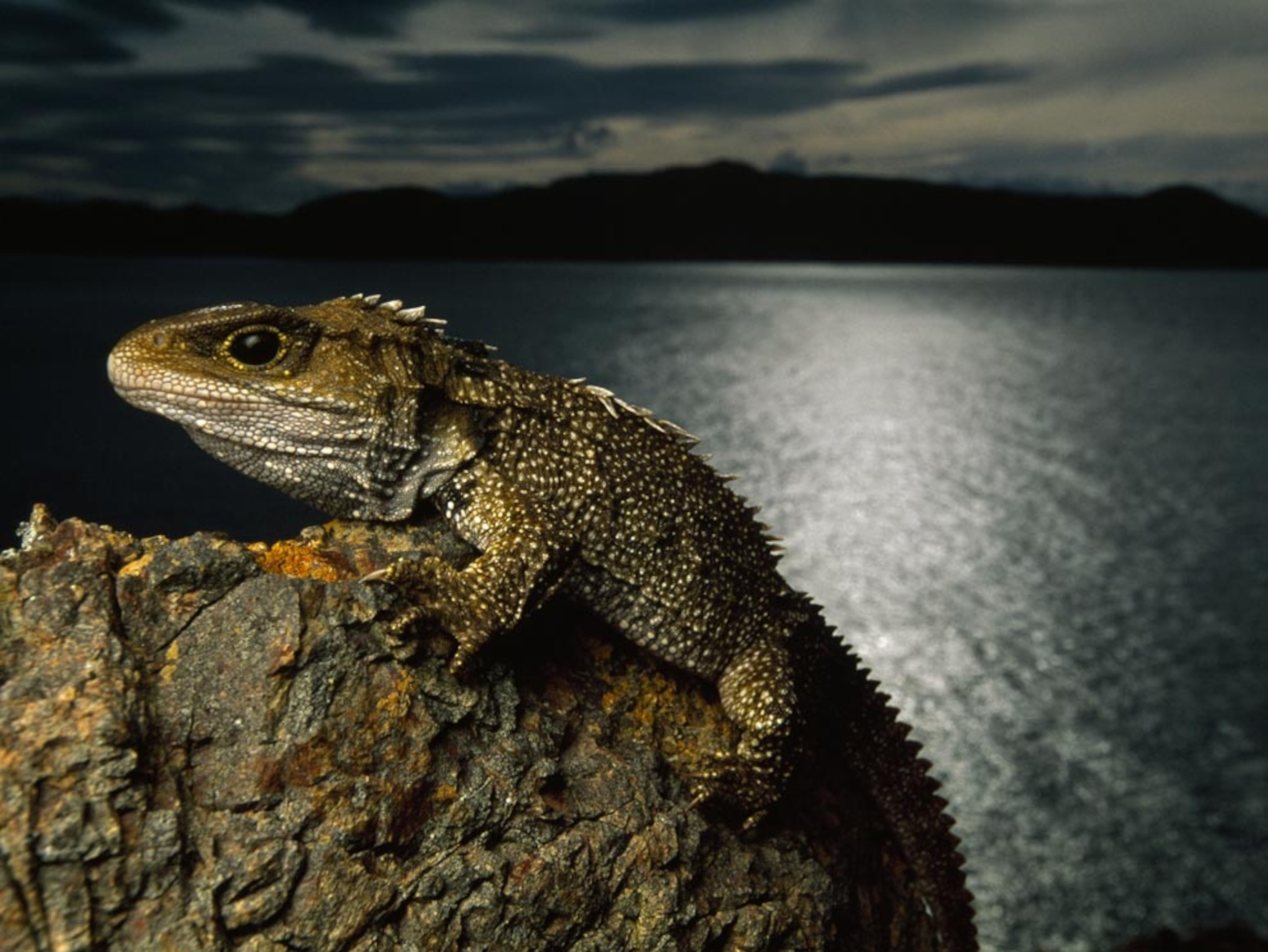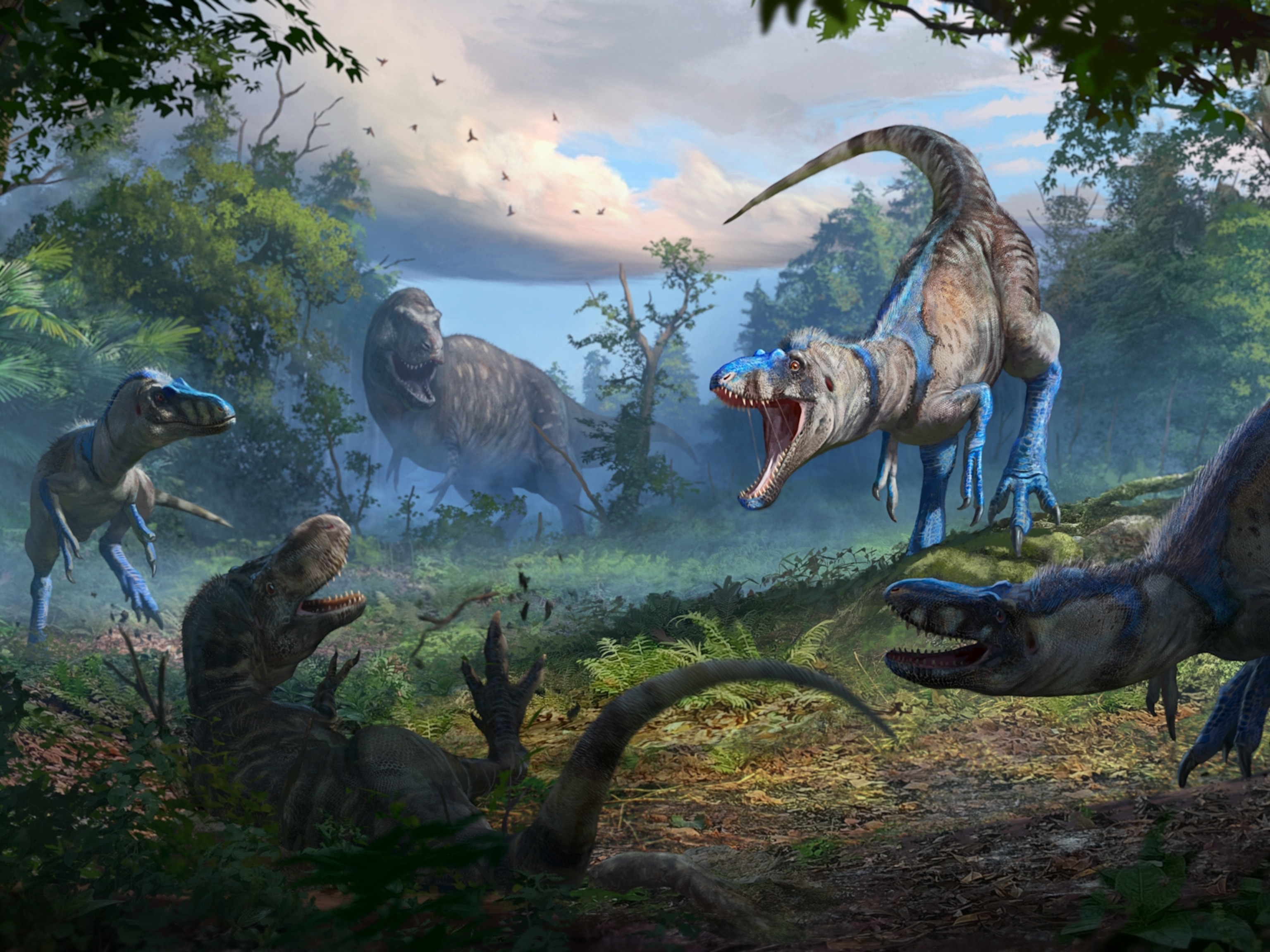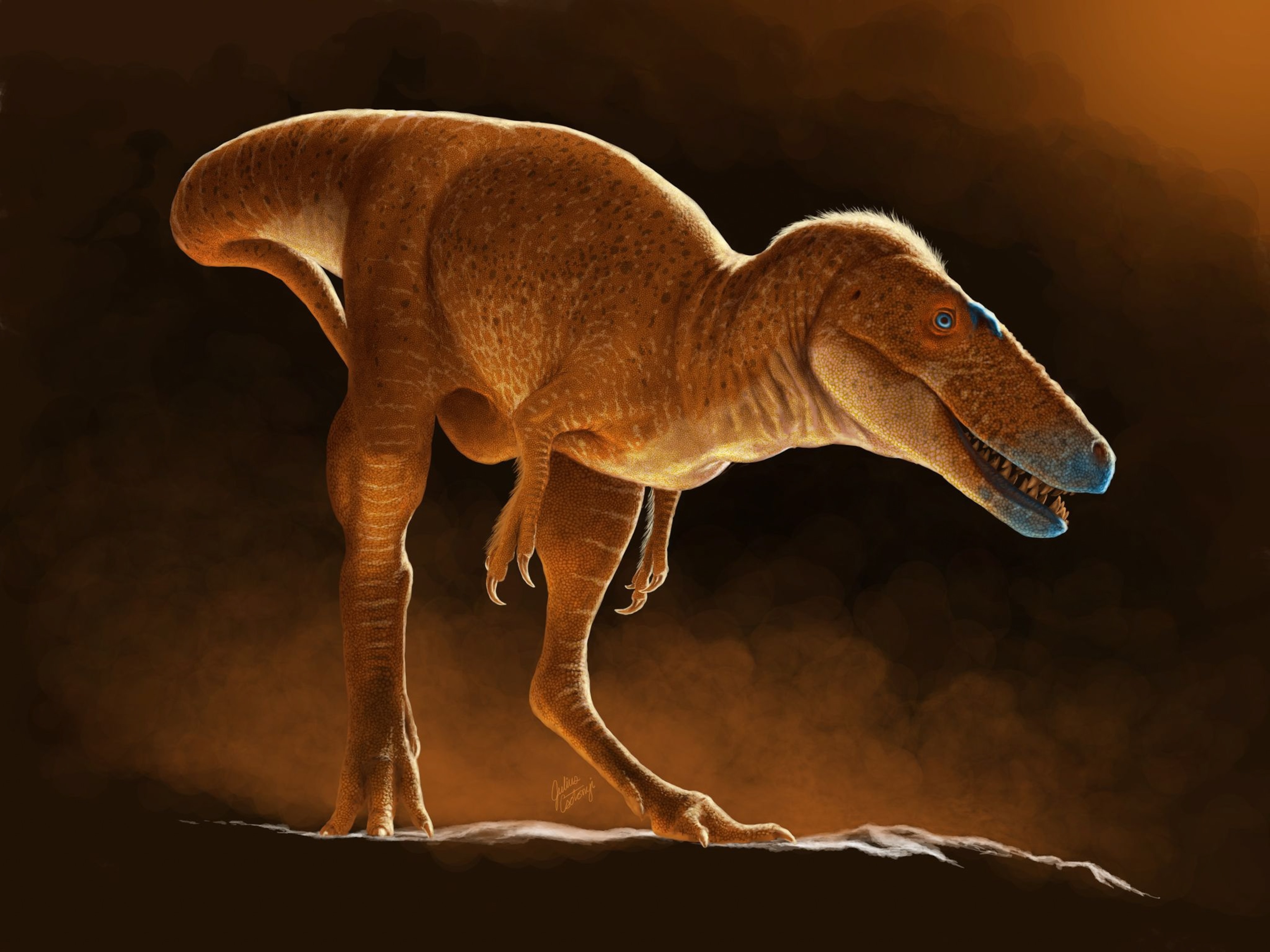
Why T. Rex Couldn't Waggle Its Tongue
Scientists were in for a surprise after peering inside the mouths of modern alligators and birds.
You might be surprised by what dinosaur tongues can teach you.
By comparing the small bones that stabilize the tongue from dinosaur fossils to those of modern birds and crocodilians, researchers found that most dinosaurs, including the Tyrannosaurus Rex, wouldn’t have been able to move their tongues very much. In the paper, published on Wednesday in PLOS ONE, researchers liken the tongues of most dinosaurs to those of alligators, which are firmly attached to the floor of the mouth.
This means that when you see a dinosaur roaring on the big screen, and spit is flying off of a long tongue that’s lifted up and sticking out between those huge, menacing jaws, you can turn to your neighbor and say, “You know, that’s not what would really happen.” And you’d be right.
How Movies Get it Wrong
In order to study the anatomy of dinosaur tongues, researchers from The University of Texas at Austin and the Chinese Academy of Sciences studied a wide range of fossils, including bird-like dinosaurs, plant eaters, and the iconic T. Rex, and compared them to high-resolution photos they took of thirteen modern bird species and three alligators. The researchers focused on the hyoid bone, a delicate bone at the top of the throat that anchors and supports the tongue, hoping to illuminate the ways that traits evolved across different lineages.
What they found was that most dinosaurs’ hyoid bones were short and simple, like those of alligators. This suggests that they may have eaten like their modern cousins, too. An alligator’s short hyoid bone, and resulting immobile tongue, means that it has to let the food passively move through its mouth. (See our best look yet at a T. rex's face.)
This is not the first similarity that Julia Clarke, a coauthor on the study and professor at the University of Texas, Austin, has found between dinosaurs and alligators. In 2016, her study on dinosaur vocalizations found that unlike the dramatic roars and screeches we’re familiar with, large dinosaurs probably made low booming and cooing noises. "They've been reconstructed the wrong way for a long time," Clarke said in a press release. (Learn more about T. rex’s tiny arms.)
When Tongues Fly
Some of the fossils, however, had more complicated tongue bones. These were the pterosaurs and the bird-like dinosaurs, which had tongue bones that resembled those of modern birds, which are complicated and widely varied. Pterosaurs left no descendants but are a unique lineage of flying reptiles discovered in the 18th century. (Learn more about pterosaurs.)
Modern bird tongues range from spiky, to forked, to tube-like, with hyoid structures that may wrap around the back of the skull or extend to the tip of the tongue. The dinosaurs that the team studied appear to have similar diversity, which led the team to suggest an interesting hypothesis. Maybe, the evolution of tongue dexterity is connected to the evolution of flight.
The researchers suggest that when dinosaurs traded their hands for wings, tongues became more important for manipulating their meals. Additionally, flight may have provided opportunities to eat different foods, which required different or more specialized mouths to better access those foods.
Birds certainly have specialized tongues. Penguin tongues are covered with backward-facing barbs that grip their food the moment it enters their mouth, while geese have muscular tongues with serrated sides that can clip the stems of plants. Some woodpeckers use barb-tipped tongues to stab through insects, and hummingbirds stick out their long tubular tongues to drink nectar.
The researchers describe an exception to their suggestion that flight is connected to tongue diversity. Plant-eaters like Triceratops and the ankylosaurs, which had to chew their food, also had complex hyoid bones. All together, the study of ancient tongues can provide insight into the lives and habits of dinosaurs and teach us about the evolution of the birds we see today.















